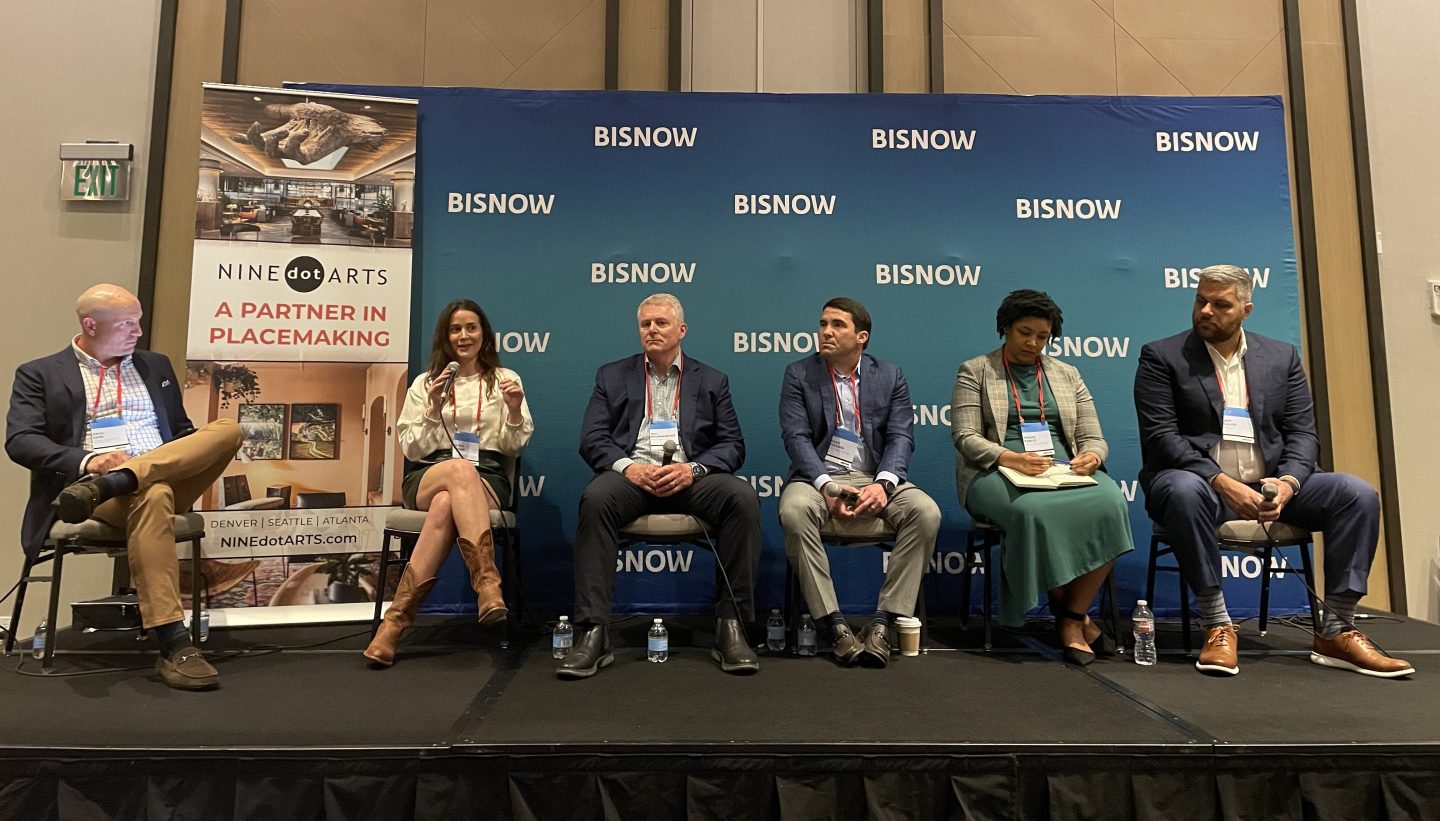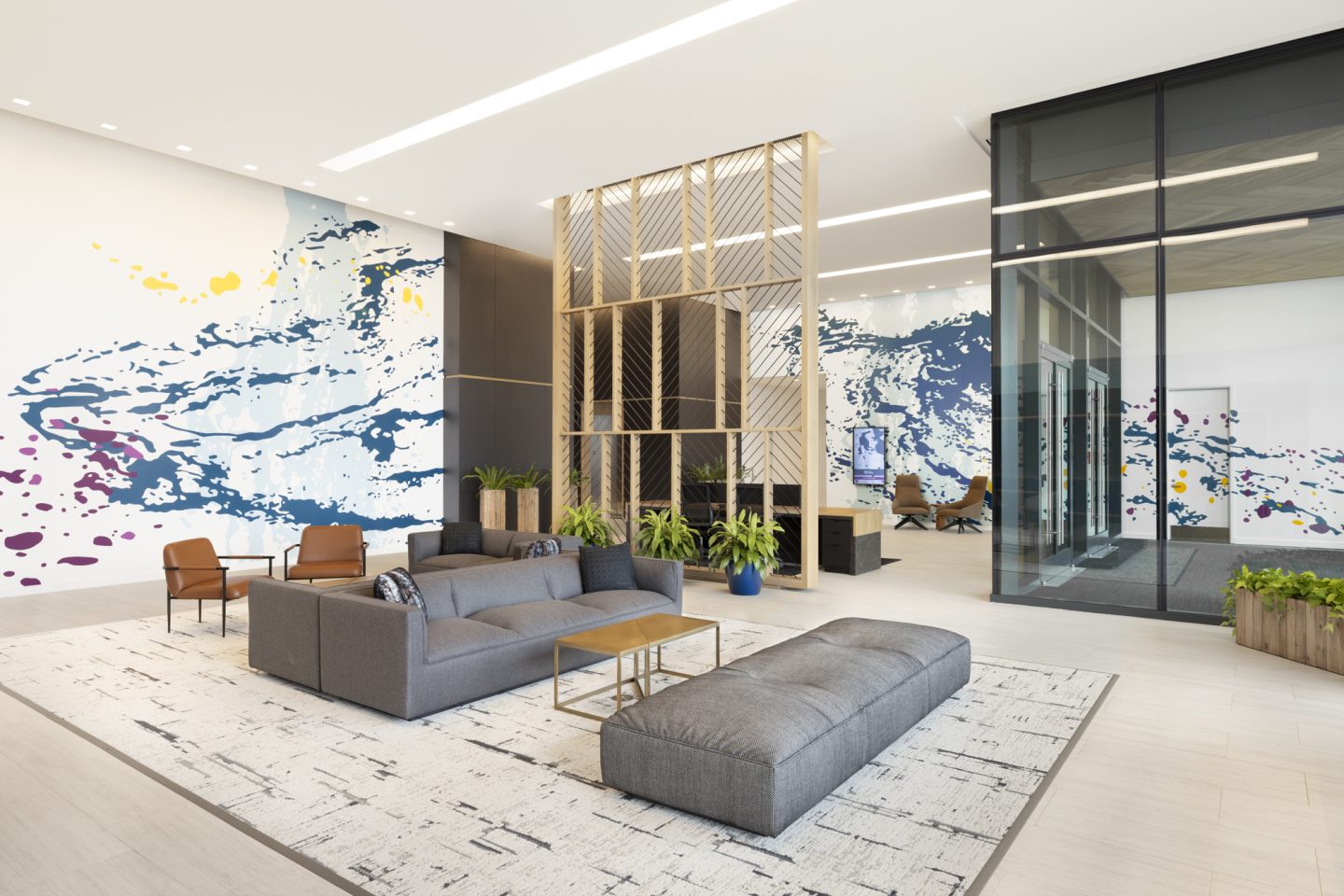Bisnow Recap: Dallas-Fort Worth State of the Market
“It’s the human condition to want an activating environment,” said Derek Alley, CEO of VCC Construction and panelist at the recent Dallas State of the Market event hosted by Bisnow. NINE dot ARTS Director of Business Development Jackie Fraser joined the event to talk about trends in development in Dallas-Fort Worth, named the #2 US market to watch in 2023. In addition to the focus on building experiential, amenity-rich spaces that will satisfy residents, the event evaluated DFW’s status as one of the “magnet markets” of the Sun Belt where the strong economy, relative affordability, and stable job market are prompting more and more individuals to migrate to the area. So what does this mean for real estate and placemaking? Get the highlights below.

Asset Class Analysis
Multifamily construction is on the rise and will continue to experience strong demand in 2023 and beyond, with developers seeking strategies to both differentiate and do right by their tenants. This means public-private partnerships are more important than ever. Much of the event emphasized the need for sincere collaboration between communities, municipalities, and developers, such that municipal leaders need to provide cash up front in order for developers to deliver quality affordable housing options that meet Dallas-Fort Worth’s growing population.
NINE dot ARTS’ Jackie Fraser shared how creative placemaking can benefit such projects, helping to facilitate collaboration, solicit community buy-in, and honor neighborhood culture and history. “Creative placemaking practices that engage local communities and municipal leaders help mitigate risks and challenge assumptions about the way we might ‘normally’ do things,” Fraser shared. “Plus they add meaning and originality to spaces and help them stand out from cookie cutter developments.”
Sam Sharp on The NINE dot ARTS Podcast: Special Districts for Special Places
This focus on differentiation certainly continued into discussions about DFW’s office environment, particularly following news of CBRE’s plans to forgo their 27-story headquarters in Dallas (mirroring decisions by Amazon, Microsoft, and other leaders). Following national trends, the future of office remains uncertain and owners are forced to assume an “adapt or die” mentality. So what does adapting look like?
For one, it means thinking creatively about how to attract people back to the office and keep them satisfied to stay. It also means meeting consumer behaviors and preferences, which favor walkable, mixed-use environments with nearby retail, F&B, and entertainment offerings. And the latter can often be out of an owner’s control.
That’s why CBDs (central business districts) have to be reimagined as CSDs (central social districts), commented several Bisnow panelists. The need to rethink CBDs to better support convenience, cohesion, and connection is critical for burgeoning areas like Dallas-Fort Worth, and will require contributions from everyone including developers, government leaders, communities, and even artists.
Fortunately, as Jackie shared at the event, a high-impact art experience is a cost-effective way to enhance an office or mixed-use development, helping to create synergies among various spaces while sparking meaningful engagement and limiting the need for expensive architectural or design updates.

6900 Layton Offices | Artwork by Mindy Bray
Putting the S in ESG
The inclusion of art and culture into real estate development can also help address another hot topic of the panel – ESG requirements. While many developers can measure and report on their environmental contributions, often “social” responsibilities can feel somewhat ambiguous, panelists commented. Yet such responsibilities will become increasingly valuable given DFW’s shifting demographics.
In addition to its booming population, Fort Worth is among the US cities with the largest growth in Black residents. This is coupled with illuminating data from the Brookings Institute about our nation’s rapid diversification, where in 2019 the median age of a white person was 43.7, compared to 29.8 for Latinos/Hispanics, 34.6 for Black individuals, 37.5 for Asian Americnas, and 20.9 for persons identifying as two or more races. So what does this mean for real estate development and ESG goals?
The implication is that audiences, tenants, and decision makers of the future are going to be increasingly diverse, with cultural histories and lived experiences that are different from that of white men who make up the majority of real estate leaders and who were long considered the standard “user” for whom spaces were designed.
All of this means that the “S” in ESG cannot be ignored. Those impacting the built environment – from developers and designers to community and city leaders – must take responsibility for how their work impacts DFW’s evolving social fabric. And creative placemaking is here to help.
As civic design expert Rico Quirindongo said on dot dot dot: The NINE dot ARTS Podcast, “We can achieve social change and social justice through the built environment and the artist community is a huge part of that.” From engaging communities and honoring local culture to connecting people across demographic lines, art and culture are powerful tools for promoting social responsibility in projects in Dallas-Fort Worth and beyond.
Rico Quirindongo on The NINE dot ARTS Podcast: Achieving Social Justice in the Built Environment